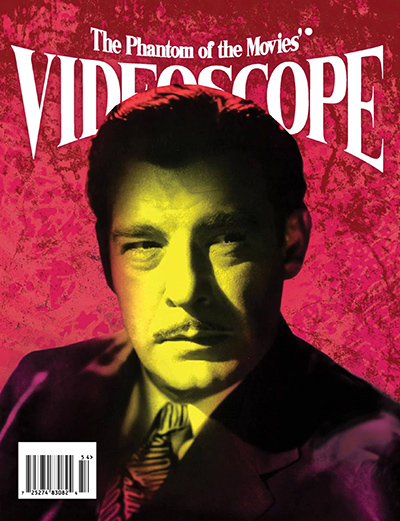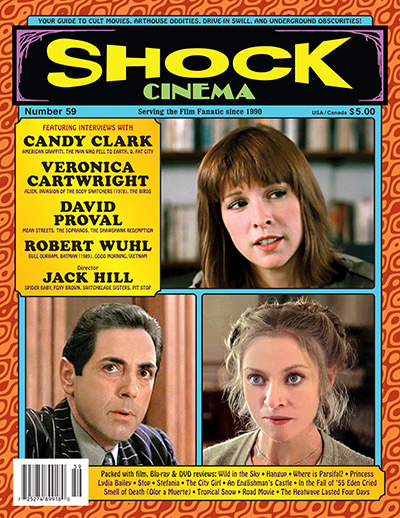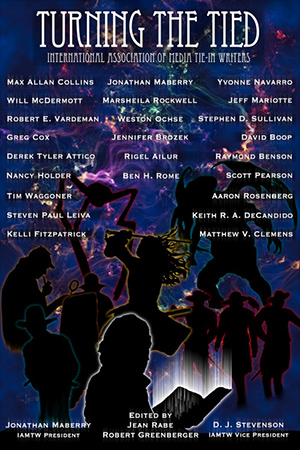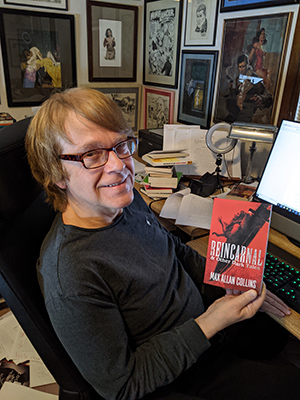I came to short stories late in my career. I had written a good number as a teenager and, in the Writers Workshop format at the University of Iowa, writing short stories was expected. But I didn’t submit anything professionally until the mid-1980s, and then almost always when I was invited. I believe the first professionally published short story was “The Strawberry Teardrop” (a Heller story) for a PWA anthology. I did allow several early things to be published in Hardboiled, back when my pal Wayne Dundee was the editor, but I don’t recall the exact time frame.
The limited number of markets discouraged me, and they still do. I tried Ellery Queen Mystery Magazine with “A Wreath for Marley,” but the editor turned it down as too long (and it’s a novella, so that’s valid) although claimed to like it. I sold a Heller story to them later – don’t recall which one – and since then, on the rare occasions I submit to EQMM, they haven’t turned anything down. This to me is a real honor. I’ve never submitted anything to Alfred Hitchcock, their sister magazine, simply because I have a good relationship with the editor at EQMM.
The response there to my submissions of Spillane/Collins short stories has been favorable – I did both “A Killer is on the Loose!” (from an unproduced Spillane radio play) and “The Big Run” (from an unproduced TV script by Mickey, done for Suspense). And now, for the first time, a Mike Hammer story appears in EQMM (the March/April 2021 issue) and the Spillane & Collins team has made the cover. [Amazon Link]
This, frankly, delights me.
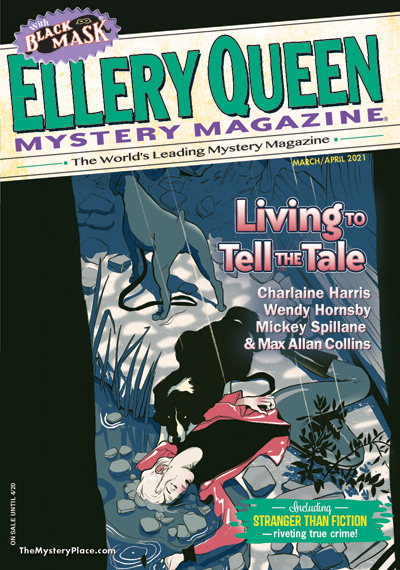
We are the issue’s Black Mask Department story, and are the lead story, which is a thrill. And here is what editor Janet Hutchings says by way of introducing “Killer’s Alley,” adapted by me from a short Hammer film script:
“Although Mickey Spillane’s Mike Hammer stepped onto the crime-fiction scene in 1947, just six years after EQMM was founded, he’s never appeared in our pages. As we celebrated the magazine’s 80th year, it’s high time he joined EQMM’s panoply of iconic characters.”
One of the joys of being the keeper of the Spillane literary keys is to see how warmly he is now regarded. This is, frankly, a big deal, getting the EQMM seal of approval. Folks my age (and a few of us are still kicking) know how less than warm the reception was to Mickey and his success in the early ‘50s from a lot of critics and writers who should have known better, but were seized by a fit of jealousy.
Short stories have been on my mind of late, because I’ve been dealing with going over the galley proofs of two new collections of my short fiction, Reincarnal & Other Dark Tales and the forthcoming Suspense – His and Hers: Tales of Love and Murder. The latter, due out in September, is a follow-up to Murder – His and Hers, and again collects stories written individually by Barb and me, and together.
Assembling these has not been without speed bumps. Wolfpack has been incredibly supportive, bringing out much of my remaining back list – the four Eliot Ness novels, the two Mommy novels, and Shoot the Moon, though I haven’t seen a physical copy of that yet. They will be bringing out Regeneration and Bombshell by Barb and me, stand-alone novels.
Already they have Murderlized (by Matt Clemens and me, a new collection I’ve very proud of) and the existing collections, Blue Christmas and Murder – His and Hers. Barb’s Too Many Tomcats is out, too, with an intro and a co-written story by me.
Again, there have been problems. I think Wolfpack’s covers are great, but I’ve had copy-editing problems; but editor Paul Bishop has been patient with my fussiness with both Reincarnal and Suspense – His and Hers. Not every problem can be blamed on copy editors, though. These stories span something like 37 years, and each tale is a file, sometimes going back to (ready for this?) WordStar days. So what we delivered sometimes had glitches I hadn’t caught. A typical problem was that, for a long time, editors wanted italics indicated by underlining; maybe a decade ago, they switched to wanting italics indicated by, yes, italics.
And Wolfpack had to get a bunch of my books out all at once. Reincarnal has a problem that a number of you have pointed out – the table of contents page is messed up. One story is not included and the numbering is wrong. I missed this. I frankly never thought to check the table of contents.
The nice thing about the e-book age is that we can correct things like that. So anyone ordering Reincarnal now, whether e-book or physical book, will have a corrected table of contents. The rest of you – well, what do you know? You own a collector’s item!
Seriously, though, folks – if you catch a typo in anything of mine, whichever of my publishers has put it out, let me know at macphilms@hotmail.com. We will at the very least be able to correct the e-book version.
Barb, by the way, has been a natural from the start where short stories are concerned. She grew up on Alfred Hitchcock Presents and The Twilight Zone and developed a real feel for a compact form with a twist ending. From the start she got great reviews and reactions for her stories, including getting slots in “best of the year” anthologies. For her, novel-writing was a stretch, but she has adapted beautifully. Nonetheless, her touch with the short form remains a strength – we have a story together (conceived by her) in – yes! – an upcoming issue of Ellery Queen Mystery Magazine.
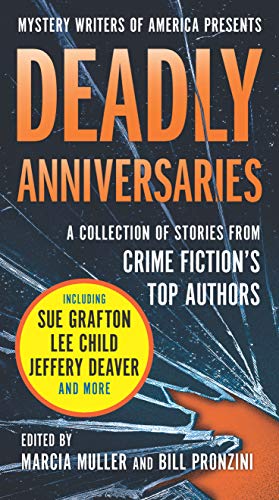
I am pleased to share with you something from another of my favorite newsstand publications, Mystery Scene. The great Jon Breen included Do No Harm in an article about recent legal thrillers; a lovely color reproduction of the cover of this latest Heller novel accompanied it.
Getting back to short fiction, a story that I consider one of my best – “Amazing Grace” – appears in the MWA anthology, Deadly Anniversaries. It’s on sale now in e-book form for under two bucks, right here.
Here is an absolutely stellar Come Spy With Me review at Bookgasm.
Here’s a mixed but smart review, mostly favorable, of Skim Deep. But for the last effin time, it’s Nolan, not Frank Nolan. He has never been Frank Nolan. Stop it already.
Finally, here’s a nice if belated (but appreciated) UK review of Girl Most Likely.
M.A.C.
